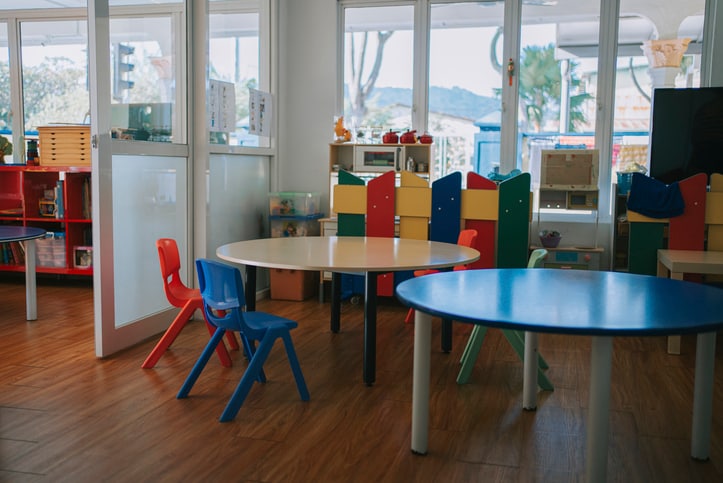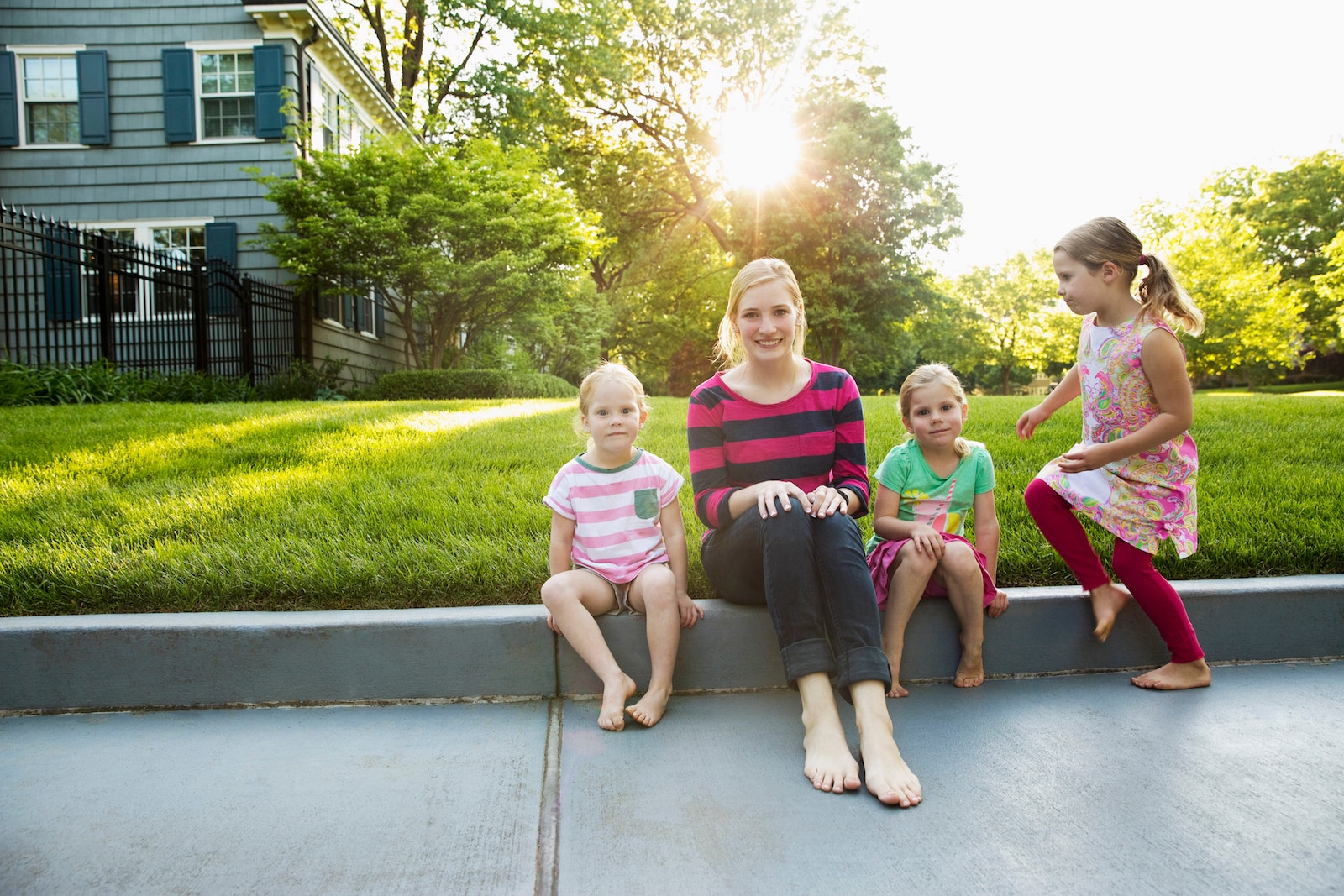It’s finally time to put your precious kiddo in daycare, or to switch daycare centers after a not-so-positive experience. It’s OK to be nervous; it just means you’ll be more cautious. Don’t let the task become daunting, however. It’s as easy as looking for a few simple signs.
There are eight major red flags to look for when deciding on the best daycare for your child, according to Linda Hassan Anderson, president and CEO of NIA & Associates, Inc. You can often spot these during the initial tour, but be sure to listen to any concerns your little one might come home with as well.
To be the best critic of any daycare you tour or your child already attends, start using your senses … including your sixth sense! Here’s what to look for.
Daycare red flags and how to spot them
1. A non-stimulating environment
Observe your surroundings — right down to the smells and sounds — to get a feel for the type of care your child will receive and the people your child will interact with. Children need engaging interaction to support healthy mental, emotional and physical development. Check for the following:
- Look for up-to-date toys and classroom items.
- Check out the play areas to make sure they’re high quality.
- Ask how often toys are switched out (and cleaned!).
- Discuss how the center chooses age-appropriate activities.
- Ask about the daycare’s educational philosophy.
“Look for a program that uses positive guidance with children, verses discipline and punishment.”
— Carolyn Stolov, family life expert
2. Lack of emotional support from caregivers
Kids need love, both from their parents and from the other adults they spend time with. Look around the facility during your visit. If children are unattended, brushed off when they ask for attention or ignored when crying, it might not be the best fit for your child.
“Look for a program that uses positive guidance with children, verses discipline and punishment,” says Carolyn Stolov, family life expert. “When a child is having a behavior issue, does the teacher yell or belittle the child, or do they redirect the child and focus on what they want the child to do verses what she doesn’t? Their main goal is to teach children, not punish.”
3. Too many children
Know the maximum recommended number of kids for a daycare facility, and pay attention to how many kids you see in your child’s classroom. If there are too many children, then kids are likely receiving inadequate care.
Federal law requires states to establish standards for child group sizes. According to Childcare.gov, recommended child to staff ratios are as follows:
Recommended staff to child ratios in U.S. daycares
| Age Of Child | Staff:Child Ratio |
| Infant (12 months and under) | 1 adult:3 infants |
| Toddler (13-35 months) | 1 adult:4 toddlers |
| 3 years old | 1 adult:7 preschoolers |
| 4 years old | 1 adult:8 preschoolers |
| 5 years old | 1 adult:8 preschoolers |
| 6-8 years old | 1 adult:10 children |
| 9-12 years old | 1 adult:12 children |
Check the guidelines for your individual state, and be sure to ask a daycare administrator if you have any questions.
4. An unclean or unsafe environment
Confirm that all health and safety procedures are in place before handing over your child to a daycare. Look around for subtle clues: Do they change diapers with gloves on and wash their hands frequently? Is there proper labeling for any special foods for children? Are the staff trained in first-aid and CPR? Do caregivers smell of cigarette smoke?
Also, check on the daycare’s transportation safety policies and find out if the facility has the means of transporting all of the children away from the daycare in the event of an emergency.
5. Lax child sick policies
Ask about sick child policies: Even though they’re often a bit of a pain for parents, having sick babies is even rougher. If you detect sick children being cared for, then your child also risks getting sick.
The right provider will request that your child stay at home when he or she is feeling ill. Ask what will happen if your child isn’t feeling well and what happens if your child has a toilet accident, says Anderson, and look for responses you feel are appropriate for your child and family.
6. Activities don’t promote mental, physical, social and emotional growth
Look for children to be involved in educational advancement, either through class instruction or educational toys and reading materials. A good daycare provider takes care to have children interact and become participants in daily activities.
Ask if each provider is accredited by National Association for the Education of Young Children (NAEYC). Members must apply individually and commit to promoting healthy growth in children’s care and education. Additionally, ask the daycare provider what activities they offer children — movies and free reign outside versus educational, engaged games with care providers — and browse any reading material to get a feel for whether it’s truly engaging young minds while keeping them entertained.
7. State licensing requirements aren’t followed
Know what is expected of your daycare provider, and be proactive when it doesn’t follow proper procedures. The law requires that anyone who is caring for more than one family (aside from his or her own) needs a license.
Requirements for licenses vary from state to state, so do your research to see if your provider is following state and local rules. Child care licenses should be displayed on site, including in family homes. To save yourself frustration, research possible providers by visiting their licensing agency early on to see if any other parents have filed a complaint.
“If a provider does not allow you to drop by unannounced anytime, that is a red flag.”
— Carolyn Stolov
8. A lack of open communication
Be aware of how readily available the director is in communicating with you, as well as how openly your child can be in contact with their caregiver. Difficulty in scheduling a visit with staff or management could be a red flag of poor business practices.
Stolov suggests looking at how teachers or providers handle children both on the playground and in classrooms. “If a provider does not allow you to drop by unannounced anytime, that is a red flag,” she says. Additionally, daycares should have an area for parents to meet and discuss their experiences or issues with both staff and other parents.
How to report unsafe daycare conditions
Pay close attention if your child describes unusual treatment, abuse, signs of being neglected or scared or concerned statements about particular care providers, or if you notice behavioral changes or physical injuries that may not have been caused by rough play.
If you observe neglect or abuse on site, or if your child reports physical harm, bullying or anything that just doesn’t sit right with you as a parent, talk to the provider immediately about your concerns. If they don’t comply with your requests, you can file a complaint with the licensing agency.
Original article written by Sheila Szabo





